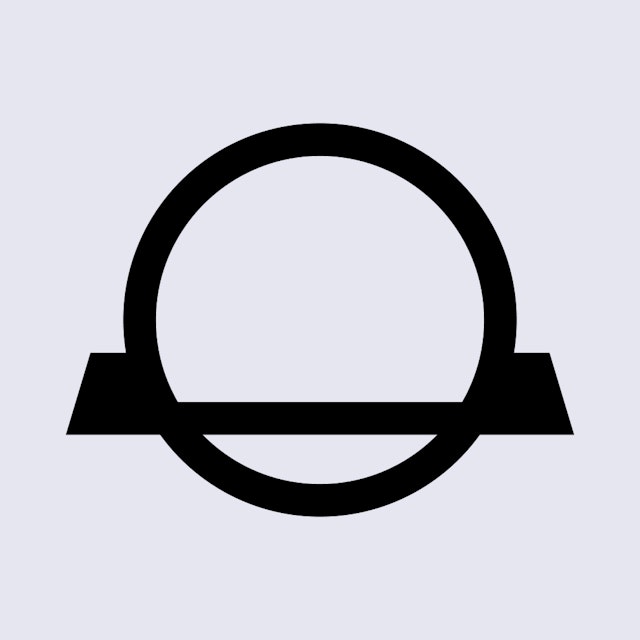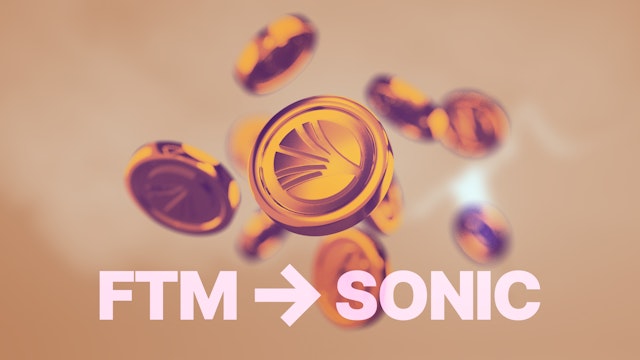What Are Layer 0, Layer 1, Layer 2 and Layer 3 in Crypto?
Ever wondered why blockchains are spoken of in layers? What is layer one, two, three, and layer zero? Here is the explainer.
In this article...
- Ever wondered what layers in blockchains are?
- There are now layers 0, 1, 2, and 3
- Here's the explanation as to what they do.

Want to learn some interesting factoids about crypto? Of course you do. Among the most foundational concepts you’ll encounter are "Layer 0," "Layer 1," and "Layer 2." These terms refer to different levels of blockchain infrastructure. They each play a unique role in crypto networks’ speed, security, and scalability.
So let’s break these chains down so you understand some of the base concepts of crypto and blockchain.
Layer 0 in crypto: The ground floor
In cryptocurrency, Layer 0 refers to the underlying infrastructure that allows blockchains to connect and communicate with each other. It’s not a blockchain itself but the technology that makes multiple blockchains possible and interoperable. It’s the ground under the building.
Layer 0 includes things like the internet, hardware, and protocols that blockchains rely on to function. Projects like Polkadot are often associated with Layer 0 because they focus on enabling different blockchains (like Bitcoin and Ethereum) to "talk" to each other. Without Layer 0, every blockchain would be an isolated island, unable to share data or value.
What is Layer 1 in crypto?
Layer 1 is the "base layer" where the core rules of a cryptocurrency are set (like Ethereum or Bitcoin). It’s responsible for things like recording transactions, securing the network, and making sure everyone agrees on what’s happening (this agreement is called "consensus"). Layer 1 is like the main floor of a house. It’s where the action happens. People send crypto, mine or stake coins, and build apps (like decentralised finance, or DeFi, on Ethereum).
Every transaction you make on Bitcoin or Ethereum happens on its Layer 1. However, Layer 1 blockchains have limits. For example, Bitcoin can only handle about 7 transactions per second, and Ethereum, while more versatile, can get slow and expensive when too many people use it at once.
This is where upgrades or new solutions come in.
What is layer 2 in crypto? The expansion pack
Layer 2 is like adding an extra balcony around your house to solve space issues. Layer 2 can be thought of as solutions built on top of Layer 1 blockchains to make them efficient and competitively priced.
As crypto grows, Layer 1 blockchains like Ethereum can’t handle the demand alone. Layer 2 steps in to take some of the workloads off. For example, instead of processing every single transaction on Ethereum’s main chain (which takes time and fees), a Layer 2 solution handles batches of transactions off-chain and then reports back to Layer 1. This speeds everything up.
Popular Layer 2 examples include the Lightning Network (for Bitcoin) and Optimism or Arbitrum (for Ethereum). These tools let you send crypto efficiently and cost effectively, which is great for everyday use, like buying a coffee with Bitcoin or trading NFTs without crazy gas fees.
Layer 2 is the upgrade that makes crypto practical for real-world use.
What is Layer 3 in crypto?
Layer 3 is a new concept that is currently emerging. Layer 3 is the top floor where the real action happens for everyday users.
Layer 3 centres around creating tools and apps that make crypto actually useful and convenient to handle.
It is where you find things like a marketplace to trade digital art (NFTs), a lending platform, or even a way to send money across different blockchains.
Layer 3 can also be thought of as the place where separate blockchains link up, like a universal translator for crypto networks.
A working example is if you turn your art into an NFT and sell it. NFT platforms such as OpenSea can be considered Layer 3. It is a marketplace built on top of Ethereum and often uses Layer 2 solutions to keep things efficient and cost effective.
You upload your sketch, mint it as an NFT, and list it for sale with a few clicks. That’s Layer 3: A user-friendly app taking the complex stuff from Layers 1 and 2 and turning it into something practical.
How do Layers 0, 1, 2 and 3 fit together?
It’s like a city. Layer 0 is the roads connecting everything, Layer 1 is the buildings where people live and work, and Layer 2 is the elevators and shortcuts that make moving around more convenient. Layer 3 is where it is made convenient for the average user.
In crypto, these layers team up to create a system that’s interconnected (Layer 0), protected (Layer 1), scalable (Layer 2) and usable (Layer 3).
Conclusion: Layers in crypto
Understanding Layer 0, Layer 1, and Layer 2 helps you see the bigger picture of cryptocurrency. Scalability and interoperability are hot topics in the crypto space, and these layers are at the heart of solving those challenges.
Blockchain isn’t just about the crypto bros making money. It is a revolution in how we store data, trust each other, and build digital systems.
Frequently asked questions
Why do we need Layer 2 solutions?
Layer 2 solutions help fix the slowdowns and high costs that happen when too many people use blockchains like Bitcoin or Ethereum. By taking some of the work off the main blockchain, they make transactions quicker and cheaper, which is key for getting more people to use crypto.
What’s the downside of Layer 2?
Layer 2 boosts speed and cost, but it’s not perfect. Its security depends on the main blockchain. If that fails, Layer 2 can too.
Are Layer 0 projects always needed?
Not every blockchain needs a Layer 0 to work on its own. But Layer 0 is helpful for connecting different blockchains, making them talk to each other smoothly. This will be needed in the future as crypto adoption grows.
What about security?
Layer 0: Secures the groundwork and links blockchains safely.
Layer 1: Sets the core security with things like mining or staking.
Layer 2: Borrows security from Layer 1 but adds risks depending on how it’s built or who runs it.
What are rollups?
Rollups are used on Layer 2, they pack lots of transactions into one to lighten the load on the main blockchain. There are two kinds, optimistic rollups and zero-knowledge rollups (ZK-Rollups).

Suggested Articles

Which Crypto Exchanges are FCA-Registered in the UK?
You may be asking, which crypto exchanges are FCA-registered in the UK? Here’s the list of crypto exchanges.Read more
Fantom to Sonic: What CoinJar Users Should Know
What is happening with Fantom? What is Sonic? Here is everything you need to know.Read more
XRP Price Predictions: We Asked AIs, Here's What They Said
Everyone loves a crypto price prediction. What do the most popular AIs predict for the price of XRP at the end of 2025?Read moreBrowse by topic
Standard Risk Warning: The above article is not to be read as investment, legal or tax advice and it takes no account of particular personal or market circumstances; all readers should seek independent investment advice before investing in cryptocurrencies.
The article is provided for general information and educational purposes only, no responsibility or liability is accepted for any errors of fact or omission expressed therein. Past performance is not a reliable indicator of future results. We use third party banking, safekeeping and payment providers, and the failure of any of these providers could also lead to a loss of your assets.
We recommend you obtain financial advice before making a decision to use your credit card to purchase cryptoassets or to invest in cryptoassets.
Capital Gains Tax may be payable on profits.
CoinJar's digital currency exchange services are operated in the UK by CoinJar UK Limited (company number 8905988), registered by the Financial Conduct Authority as a Cryptoasset Exchange Provider and Custodian Wallet Provider in the United Kingdom under the Money Laundering, Terrorist Financing and Transfer of Funds (Information on the Payer) Regulations 2017, as amended (Firm Reference No. 928767).
In the UK, it's legal to buy, hold, and trade crypto, however cryptocurrency is not regulated in the UK. It's vital to understand that once your money is in the crypto ecosystem, there are no rules to protect it, unlike with regular investments.
You should not expect to be protected if something goes wrong. So, if you make any crypto-related investments, you're unlikely to have recourse to the Financial Services Compensation Scheme (FSCS) or the Financial Ombudsman Service (FOS) if something goes wrong.
The performance of most cryptocurrency can be highly volatile, with their value dropping as quickly as it can rise. Past performance is not an indication of future results.
Remember: Don't invest unless you're prepared to lose all the money you invest. This is a high-risk investment and you should not expect to be protected if something goes wrong. Take 2 mins to learn more.
UK residents are required to complete an assessment to show they understand the risks associated with what crypto/investment they are about to buy, in accordance with local legislation. Additionally, they must wait for a 24-hour "cooling off" period, before their account is active, due to local regulations. If you use a credit card to buy cryptocurrency, you would be putting borrowed money at a risk of loss.
We recommend you obtain financial advice before making a decision to use your credit card to purchase cryptoassets or to invest in cryptoassets.
Your information is handled in accordance with CoinJar’s Privacy Policy.
Cryptoassets traded on CoinJar UK Limited are largely unregulated in the UK, and you are unable to access the Financial Service Compensation Scheme or the Financial Ombudsman Service.
We use third party banking, safekeeping and payment providers, and the failure of any of these providers could also lead to a loss of your assets.
We recommend you obtain financial advice before making a decision to use your credit card to purchase cryptoassets or to invest in cryptoassets. Capital Gains Tax may be payable on profits.
CoinJar’s digital currency exchange services are operated in the UK by CoinJar UK Limited (company number 8905988), registered by the Financial Conduct Authority as a Cryptoasset Exchange Provider and Custodian Wallet Provider in the United Kingdom under the Money Laundering, Terrorist Financing and Transfer of Funds (Information on the Payer) Regulations 2017, as amended (Firm Reference No. 928767).
Apple Pay and Apple Watch are trademarks of Apple Inc. Google Pay is a trademark of Google LLC.
This site is protected by reCAPTCHA and the Google Privacy Policy and Terms of Service apply.

